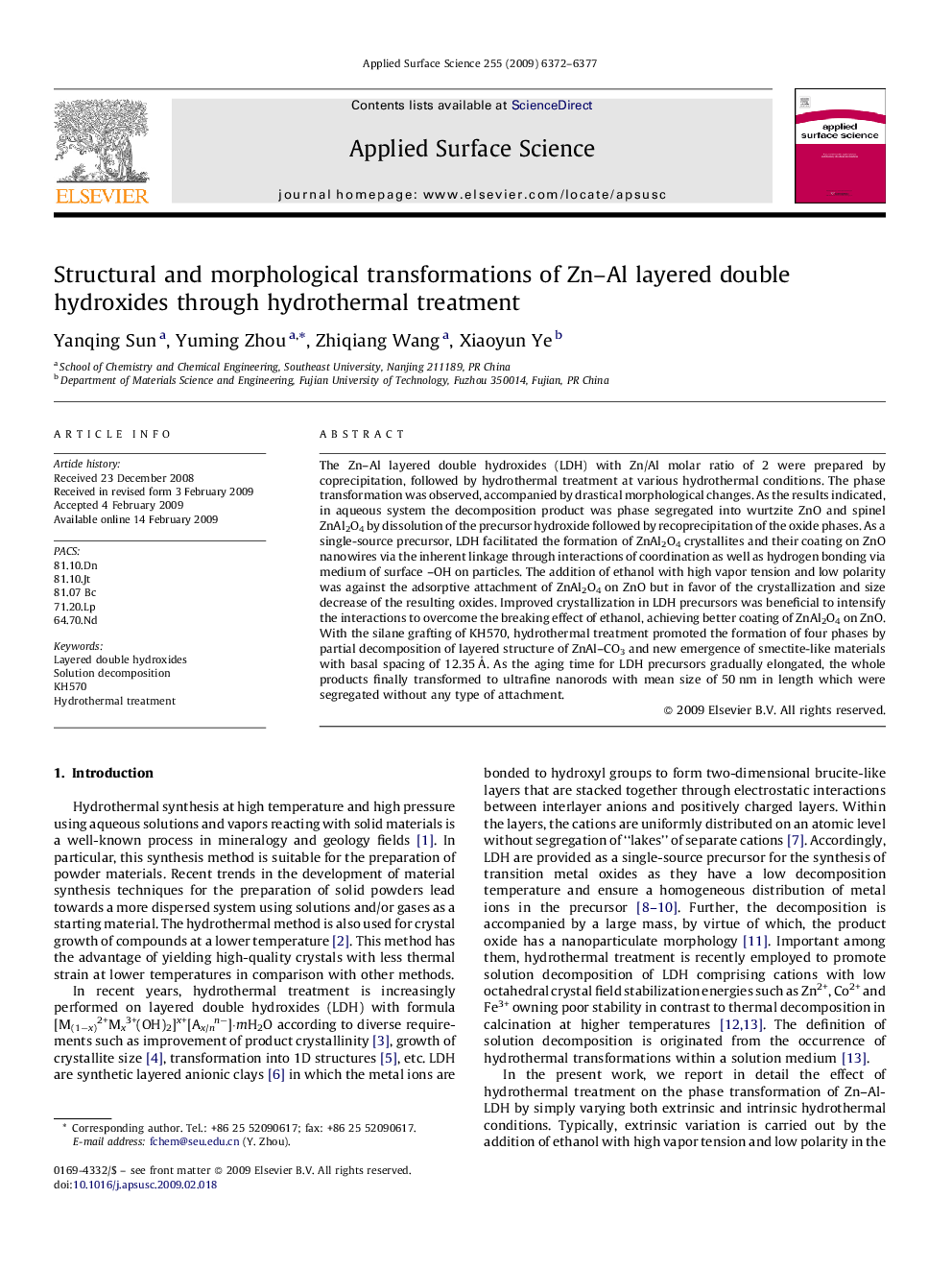| Article ID | Journal | Published Year | Pages | File Type |
|---|---|---|---|---|
| 5362572 | Applied Surface Science | 2009 | 6 Pages |
The Zn-Al layered double hydroxides (LDH) with Zn/Al molar ratio of 2 were prepared by coprecipitation, followed by hydrothermal treatment at various hydrothermal conditions. The phase transformation was observed, accompanied by drastical morphological changes. As the results indicated, in aqueous system the decomposition product was phase segregated into wurtzite ZnO and spinel ZnAl2O4 by dissolution of the precursor hydroxide followed by recoprecipitation of the oxide phases. As a single-source precursor, LDH facilitated the formation of ZnAl2O4 crystallites and their coating on ZnO nanowires via the inherent linkage through interactions of coordination as well as hydrogen bonding via medium of surface -OH on particles. The addition of ethanol with high vapor tension and low polarity was against the adsorptive attachment of ZnAl2O4 on ZnO but in favor of the crystallization and size decrease of the resulting oxides. Improved crystallization in LDH precursors was beneficial to intensify the interactions to overcome the breaking effect of ethanol, achieving better coating of ZnAl2O4 on ZnO. With the silane grafting of KH570, hydrothermal treatment promoted the formation of four phases by partial decomposition of layered structure of ZnAl-CO3 and new emergence of smectite-like materials with basal spacing of 12.35Â Ã . As the aging time for LDH precursors gradually elongated, the whole products finally transformed to ultrafine nanorods with mean size of 50Â nm in length which were segregated without any type of attachment.
